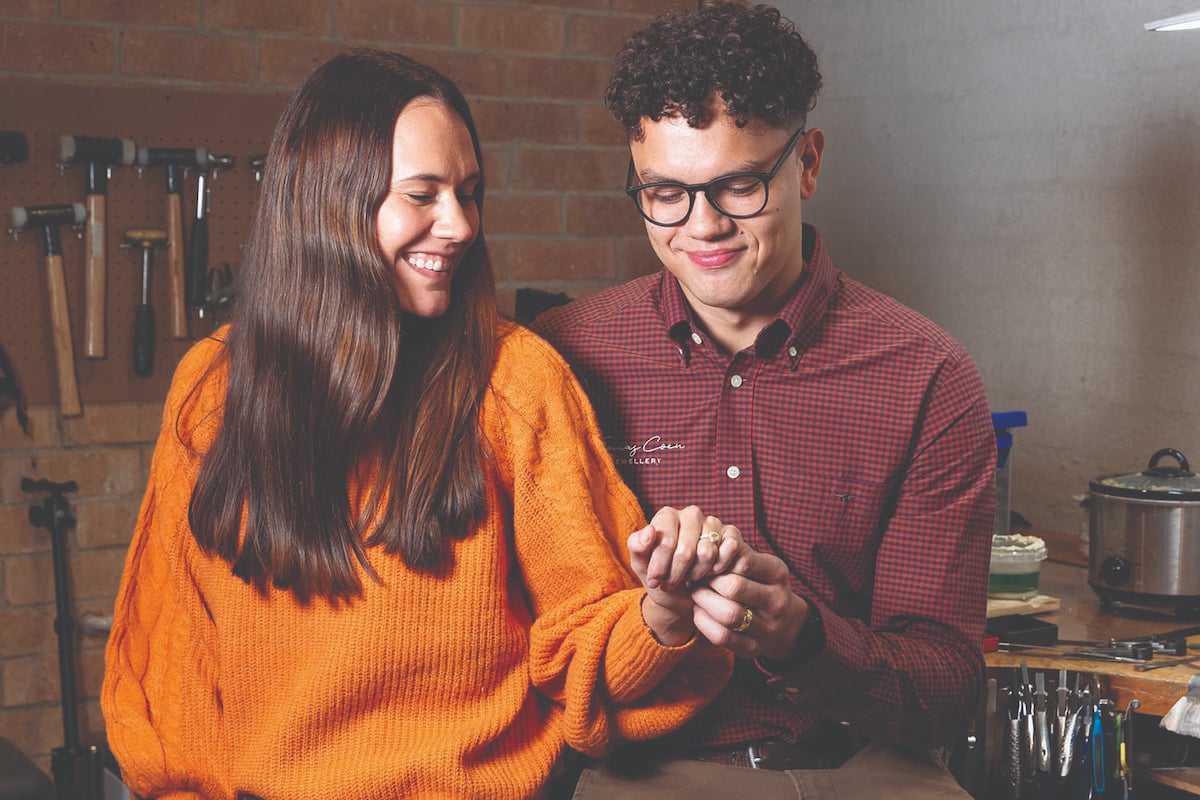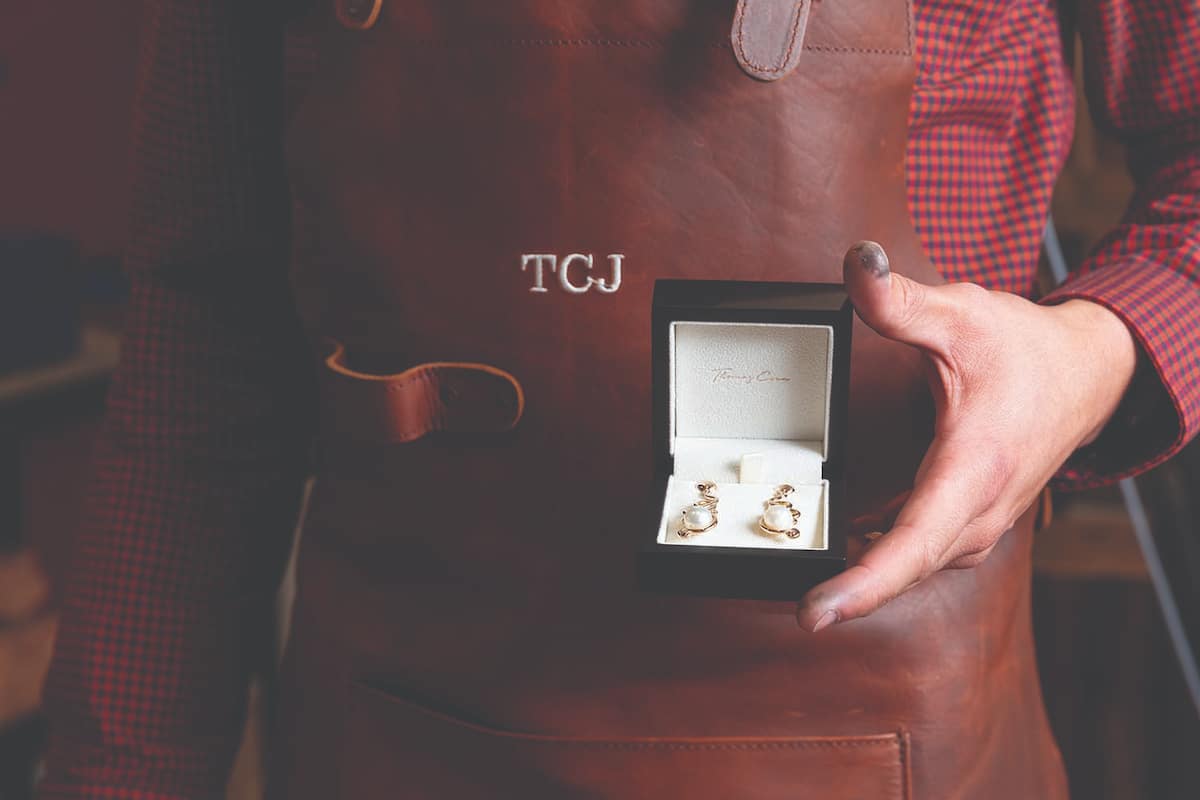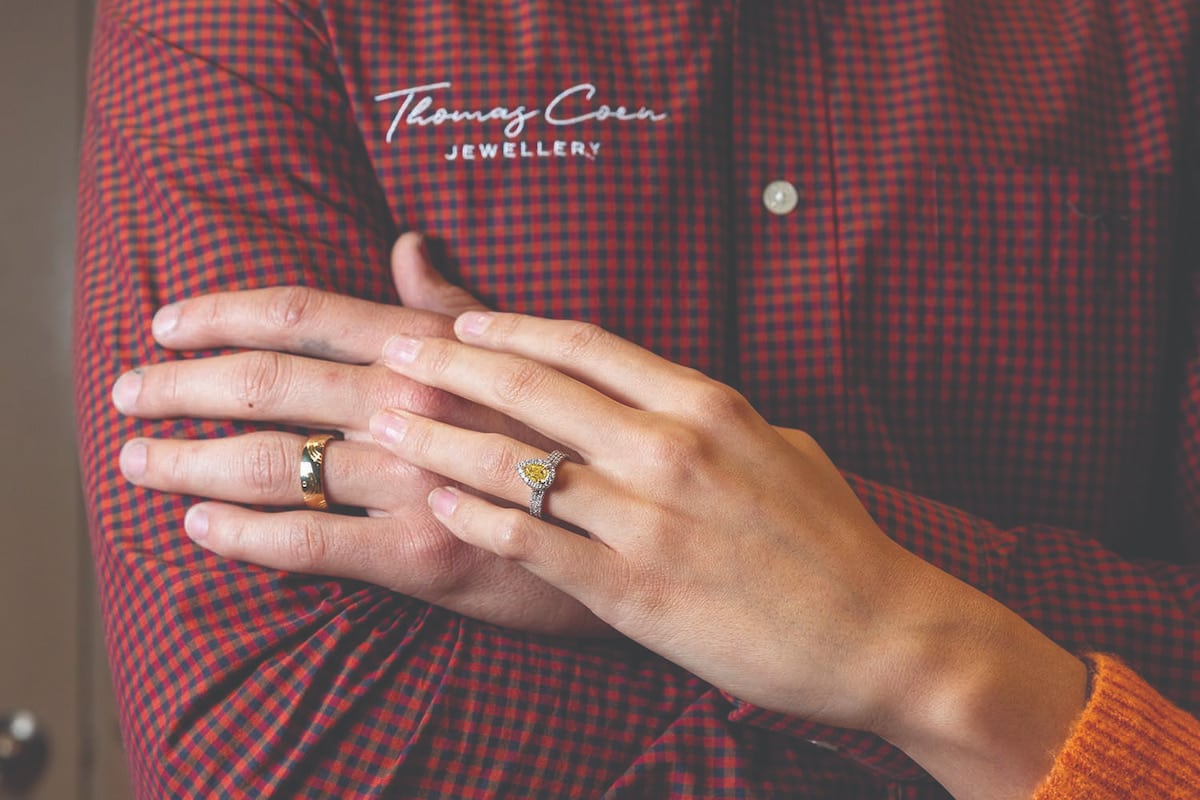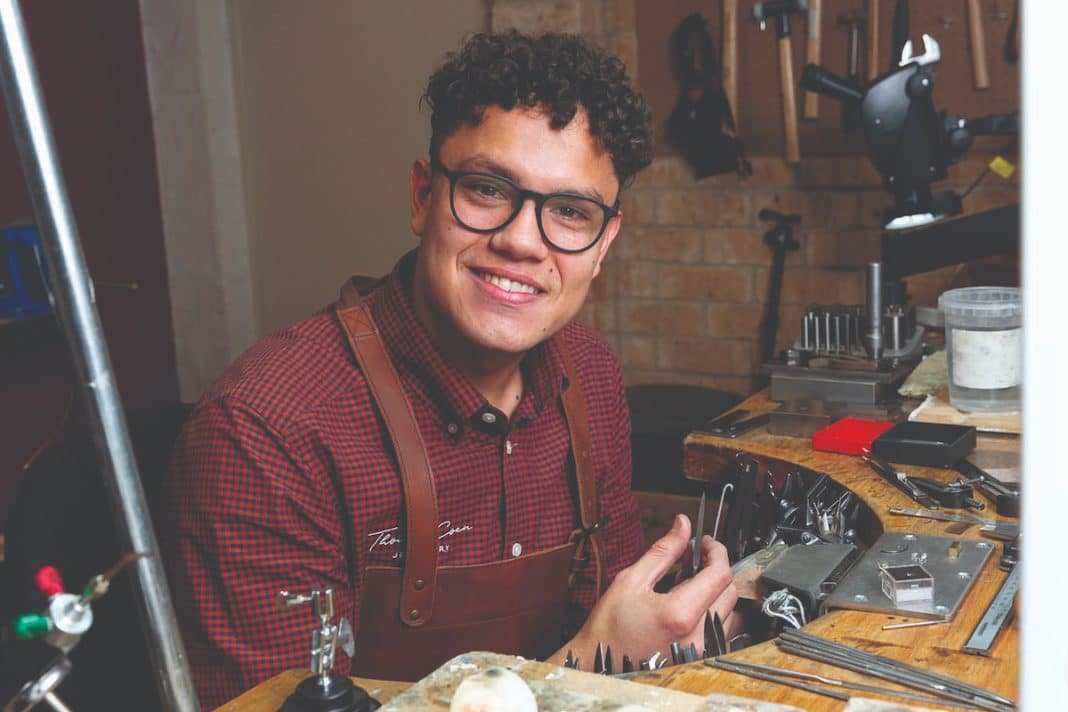Tucked away in a residential village in Harrison is the studio of one of the few Indigenous handmade manufacturing jewellers in the country.
Thomas Coen, 29, moved to Canberra for love. However, his story starts long before then, on a small Aboriginal community not too far out of Darwin.

“The population was about 50 to 70 people. Dad was the hunter-gatherer of the community; the amount of times we’d get neighbours, other countrymen, coming to us for a bag of fish that Dad had caught, or a kilo of prawns that he and I had dragged across long beaches …
“He’s a fisherman to this day. It says so on my birth certificate. Father’s occupation: fisherman,” smiled Thomas.
“It was carefree, living in the community. Dad and I have a lot of memories on that land, even though we left by the time I was seven.
“It wasn’t easy integrating into city society. It wasn’t easy trying to get an education, and it wasn’t easy financially. Dad loved really hard and grew me up in what he thought was the best way he could possibly provide.”
The first sparks of curiosity about jewellery caught when Thomas was nine.
“I was always interested in a jewellery collection that my grandmother had. It was her prized possession. It was old, it was battered, it needed repairs, now that I look back.
“But at the time, I saw the minor details that, if you don’t look hard enough, you’ll never see, but someone took the time to do it.
“There was a piece that my grandfather gave her when they were courting. A special piece that she won at bingo, a little golden nugget on the end of a pendant. She really loved that one, because she loved her bingo,” he smiled.
“She was a Christian woman. She had a nice cross that she would hold every night and pray for us grandkids. I thought that was beautiful; that she cared so much and that she held a piece when she thought about us.”
Sparks wouldn’t grow into passion until years later, when a jeweller, also Thomas’s football coach, offered the opportunity to do work experience at his shop, to which 16-year-old Thomas turned up “ready to sit down, hang out, and chat”.
“But he had prepared a bit of work for me. He got me to make up a plain wedding band and cut out a pendant of my football club mascot. I managed to finish in a couple days, and he was shocked.
“He said, ‘That’s all I had for you for the week. You picked up heat control with the torch very quickly.’ And I said, ‘Do I go home?’”
Thomas smiled, “But I enjoyed that week by the end of it.” Over school holidays, weekends, and after school, Thomas continued to work at the shop where his passion for jewellery grew.

“Before I knew it, I was finishing school, and he asked me, ‘what do you want to do with yourself?’
“I didn’t know. I thought maybe I’d join the police, or NTFL (Northern Territory Football League) in a traineeship. He lined me up with a two-week trial down in Adelaide with Mark McAskill’s, a wholesaling manufacturer which was, at the time, the biggest manufacturing jewellers in the Southern Hemisphere.”
Thomas excelled in Adelaide, and the trial became his entry point to a complicated business to break into. “It’s a huge trust trade. And on top of that, it’s an art form … I’ve come to realise this trade is very cliquey. Very expensive to start, and very expensive to run, as one of the few trades where the materials completely outweigh the expenses of labour.”
Thomas attributes these as some of the reasons why First Nations people struggle to break into the industry. “I believe we have so much potential in this trade. Between our art, how we work with our hands, our different ideas.”
His father, a proud Jawoyn and Kala Lagaw Ya man, is his greatest inspiration.
“He is a man of brilliant craft. He’s got a small bit of land two hours out of Darwin that he calls his own. He made a shack out of old pieces of corrugated iron, close to a beach where he has his fish trap that he made of eight-foot trees and chicken wire, running along to direct the fish into the trap.
“For him, it’s his culture. It’s the family business. It’s the way to give back and provide, and it had always provided for us, it provided for our community.
“I love the idea of telling a story with my pieces, with a concept of country in mind, of heritage in mind, tying me back to family while taking it in my own direction,” said Thomas.
“My heritage is the sole reason behind going into my own business. To create my own work, tell stories through these pieces, and make sure this business is 100 per cent Indigenous owned.”
His greatest challenge, building his business off his own back, took 100-hour weeks, and no small amount of sacrifice – including making a two-day trip to collect a workbench from a closed-down jewellery school, with his then-girlfriend, Renee.
“I looked on forums, did the whole Gumtree research, there’s not much in the trade when it comes to second-hand jewellery equipment.”
The couple, who married last April, say that the bench was where it all began, with an intimate studio building up around it, piece by piece.
“I moved here for love, and it was the best thing I’ve ever done. My very new partner was pursuing her career and had found a job opportunity in Canberra. We were both concerned about if I could make the move. I said, ‘If you love the job, I’ll move with you’.”
To no surprise, Renee’s ring is one of a kind. “I knew she loved sunflowers. It gave me the idea to go with an intense yellow diamond. The fact behind a fancy-coloured diamond is that they are mined one in every 10,000. It related so much to how I feel about her.”

To date, in-the-know Canberrans have been steadily impressed with the uniqueness behind each of Thomas’s pieces.
“In five years, I want to have a beautiful shopfront. Full of Indigenous high-end jewellery.
“One day, I hope to have huge one-off designer pieces to enter in awards, that I could do in collaboration with rural Indigenous communities, with the elders. With their permission, I want to create pieces that tell their stories.”
To find out more, visit thomascoenjewellery.com.au
Canberra Daily would love to hear from you about a story idea in the Canberra and surrounding region. Click here to submit a news tip.



